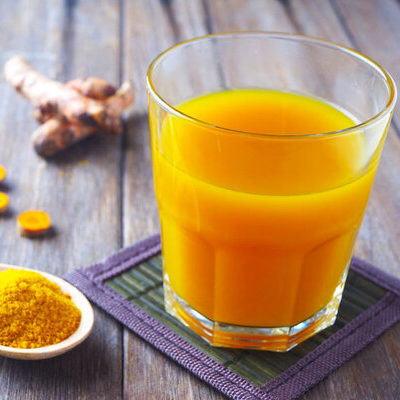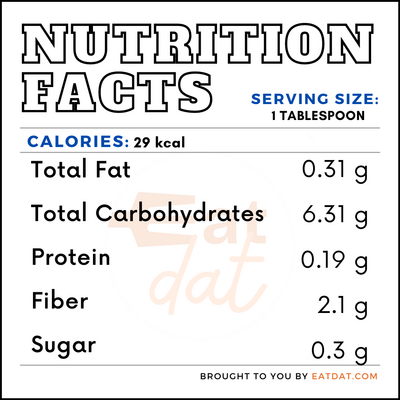
Turmeric Juice
What is Turmeric Juice?
Turmeric juice is the liquid extract of the turmeric root. Over the years, turmeric juice has evolved into different forms such as drops, elixirs, and mixed drinks. Turmeric, when grounded or grated, can also be used to make tea or Golden Milk.
- Some common ways of using turmeric in the kitchen include juicing, soups, salad dressings, condiments, roasting, and spicing or sweetening foods.
- The natural chemical (known as Curcumin) present in turmeric can also be used to color and preserve foods.
The top five most popular turmeric tea brands include:
- Traditional Medicinals Organic Turmeric with Meadowsweet & Ginger Tea
- Organic India Tulsi Turmeric Ginger Tea
- V-TEA Turmeric Spice Anti-Inflammatory Tea
- The Republic of Tea Organic Turmeric Ginger Green Tea
- Rishi Turmeric Ginger Tea
Origin of turmeric juice
The origin of turmeric can be traced to 2,500 BCE in New Delhi, India. It was there that archeological analysis of found pots discovered traces of ginger, turmeric, and garlic. Around 500 BCE, turmeric came into the spotlight as a key ingredient in ancient Ayurvedic medicine. In this ancient medicinal system, turmeric was burnt and inhaled to cure congestion. Further study found that turmeric improved the healing of bruises, wounds, and could treat skin conditions like chickenpox.
For the people of India, the importance of turmeric goes beyond medicinal values. It is a fabric of their tradition and Hindu religion. Hannah Glasse’s 1747 cookbook, The Art of Cookery Made Plain and Easy, revealed the spicy use of Indian turmeric to the world. Today, turmeric has garnered interest from scientists, cooks, and doctors across the globe. The popularity of this root has also led to increased consumption of this beverage.
Nutrition
One tablespoon of turmeric powder offers:

The health benefits of this juice include:
- Strengthening of the immune system
- Treating and reducing the risk of developing cancer
- Boosting digestive function
- Preventing diabetes
- Enhancing and protecting the liver
- Improving the functioning of the lungs
For higher nutritional value and to speed up the absorption of turmeric into the bloodstream, you should add at least 1/20 teaspoon of black pepper. Another way to improve the bioavailability of this food is by adding a source of fats like oils, creams, avocado, or nut butter.
When consumed in excess, turmeric juice may have the following side effects:
- This juice may cause an upset stomach.
- Turmeric juice may encourage the formation of kidney stones.
- It may lead to an allergic reaction.
- This drink may rob iron from the body.
Commercial production
India is the most significant producer of turmeric in the world, responsible for nearly 80% of global production. In 2016, the worldwide turmeric market size was valued at $3.16 billion. In 2017, the global turmeric market volume reached 1.7 million metric tons. Turmeric juice is commercially produced by bottling through cold-pressed or high-pressure processing (pascalization) methods.
Application
Turmeric juice can be easily made at home. Furthermore, fresh turmeric juice can last up to seven days in the refrigerator. Still, it should be consumed within five days to get the best nutritional value. When frozen, it can last up to a year.
Turmeric juice recipes
This juice can be blended with other foods for a delicious taste. Here are some recipes:
- Turmeric Ginger C Boost Life Juice
- Lemon Ginger Turmeric Wellness Shots
- Carrot Ginger Turmeric Juice
- Delicious Juice Recipe With Turmeric
- Jamu Juice (Tumeric Ginger Drink)
FDA Regulation
The Food and Drug Administration classifies turmeric as a raw agricultural commodity. It also regulates its cultivation, harvesting, packing, and holding. The FDA labels turmeric as a food spice, coloring, and chemical preservative. Additionally, it regulates the personal qualifications, health and hygiene, agricultural water requirements, tools, equipment, and sanitation required for this commodity.
References
Peterson, Wendy Jo. “8 Surprising Ways to Get More Turmeric in Your Life.” Taste of Home, Taste of Home, 29 Jan. 2019, www.tasteofhome.com/collection/unexpected-turmeric-uses/.
“Turmeric: Uses, Side Effects, Interactions, Dosage, and Warning.” Webmd.com, WebMD, www.webmd.com/vitamins/ai/ingredientmono-662/turmeric.
Avey, Tori. “What Is the History of Turmeric?” pbs.org, Public Broadcasting Service, 9 Mar. 2015, www.pbs.org/food/the-history-kitchen/turmeric-history/.
“CFR – Code of Federal Regulations, Title 21.” Accessdata.fda.gov, U.S Food & Drug Administration, 1 Apr. 2019, https://www.accessdata.fda.gov/scripts/cdrh/cfdocs/cfcfr/CFRSearch.cfm?CFRPart=112
